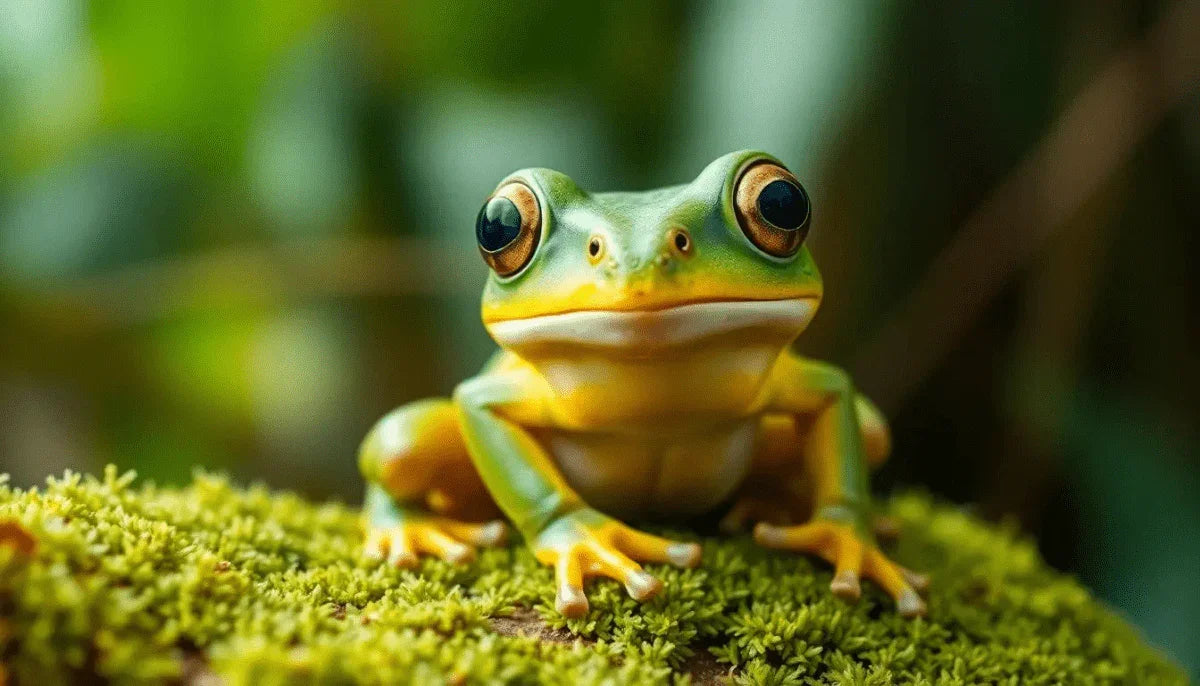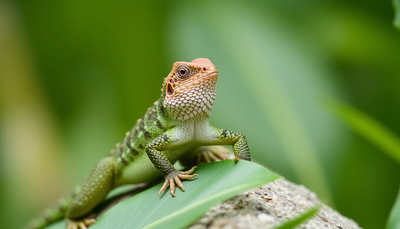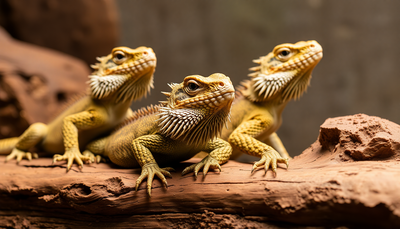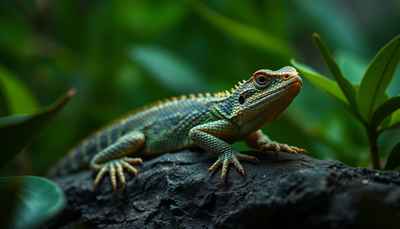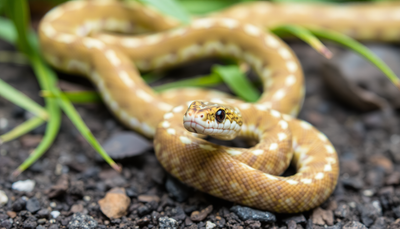- Introduction to Pacman Frogs' Diet
- Essential Food Items for Pacman Frogs
- Feeding Frequency and Portion Guidelines
- Supplements and Nutritional Additives
- Foods to Avoid for Pacman Frogs
- Observing Dietary Preferences and Changes
- Conclusion: Maintaining a Balanced Diet
Introduction to Pacman Frogs' Diet
Pacman frogs are beloved by reptile enthusiasts for their distinctive looks and low-maintenance care needs. But when it comes to keeping these unique frogs healthy and happy, understanding their diet is key! So, what do Pacman frogs eat? These little amphibian companions are known for being great hunters and eaters—offering them the right meal options ensures they thrive in their environment.
Before diving into the specifics of their dietary needs, let’s take a closer look at why feeding them correctly is so crucial. Pacman frogs are carnivorous by nature, reliant on a high-protein diet that mirrors what they’d eat in the wild. This means their nutrition heavily centers on live and animal-based meals for maximum health and growth.
Being well-informed about their appetite isn’t just about their physical health—feeding them appropriately also influences their behavior. For example, a balanced diet prevents lethargy or aggression while fostering vitality. Think about it: no one likes a cranky frog, right?
In this guide, we’ll explore all aspects of Pacman frog nutrition, including which foods to prioritize, how much to feed them, and even what not to serve. Plus, you’ll find tips on spotting changes in their appetite and handy suggestions for products that make feeding them a breeze. Stick around; it’s about to get *ribbiting*!
If you’re a beginner owner or a seasoned frog caretaker, this guide is your one-stop resource to ensure your Pacman frog gets the gourmet treatment it deserves. After all, what could be better than a healthy and thriving Pacman frog grinning back at you from its tank?
By the end of this article, you’ll know exactly how to structure their diet for peak health. Let’s jump in!
Essential Food Items for Pacman Frogs
Now that you’re warmed up on why diet matters, let’s talk specifics. Pacman frogs need a mix of nutrient-rich food, primarily animal-based items that provide protein and energy. So, what do Pacman frogs eat? Here’s the shortlist:
1. Live Insects
The bulk of a Pacman frog’s diet consists of insects like crickets, roaches, and mealworms. Crickets are particularly popular since they’re easy to source and great at providing protein. Mealworms, with their hard exoskeletons, are another favorite snack, though you might want to mix these in with softer foods to avoid digestive trouble.
2. Worm Varieties
Pacman frogs adore a juicy worm! Earthworms and nightcrawlers rank high among frog fanatics for being nutrient-rich and easy to digest. Just ensure they’re free of chemicals or harmful substances if you collect them yourself.
3. Small Vertebrates
Here’s where things get wild. Growing Pacman frogs may enjoy pinky mice or other small vertebrates. These help with growth, particularly in juveniles, but they need to be given sparingly to avoid overfeeding.
4. Ready-Made Food Options
Want an easy option? Try using ready-made Pacman frog food like Zoo Med Pacman Frog Dry Food. These options are perfect for those times when live prey isn’t available or you’re in a pinch.
5. Feeder Fish
Live feeder fish like guppies can occasionally be offered as a protein-packed treat. Make sure they are gut-fed beforehand for added nutrition.
Variety is the spice of life, even for a frog. Rotate these foods to ensure your Pacman frog isn’t missing out on essential nutrients, and watch them gobble it all up with their adorable “Pacman” antics!
Feeding Frequency and Portion Guidelines
Feeding your Pacman frog isn’t just about offering the right foods—it’s also about timing and portion control. Get it right, and you’ll have a healthy, satisfied frog. Here are some tips:
1. How Often Should You Feed?
Juvenile Pacman frogs can be voracious eaters, requiring meals every day or every other day. Once they’re adults, they’ll need feeding just 2-3 times a week. This cutback helps mimic their natural eating habits in the wild.
2. Serving Size Basics
Portions should be based on the size of your frog. A general rule of thumb? Never feed anything larger than the space between their eyes. This prevents choking and digestive issues.
3. Meal Timing
Most Pacman frogs are nocturnal, so offering food in the evening aligns with their natural hunting instincts. Evening feedings also ensure they’re active and alert during mealtime.
4. Signs of Overfeeding
Be careful not to overfeed. Signs your frog is eating too much include obesity (yes, frogs can get chonky!) and regurgitation. Scale back portions if you see these signs.
5. Monitoring Growth
Watch for unhealthy weight gain or stunted growth—it can often point to underfeeding or nutrient imbalance. Adjust frequency and food variety accordingly.
By finding the right frequency and portions, you’ll keep your frog’s diet in the sweet spot of “just enough” to stay healthy without any issues.
Supplements and Nutritional Additives
Even if you’re careful with food variety, supplements are sometimes necessary to fill in any gaps in your Pacman frog’s diet. They’re like little nutritional boosters that ensure your frog stays in tip-top shape.
1. Calcium Supplements
Calcium is vital for a frog’s bone health. Dust your Pacman frog’s prey with a calcium powder a couple of times a week. This ensures strong skeletal development and avoids metabolic bone disease.
2. Vitamin Supplements
Multivitamin powders provide essential nutrients not always covered by their live prey. Use these sparingly—once every two weeks is more than enough.
3. UVB Lighting
If your frog’s habitat lacks UVB exposure, consider adding lighting like the Talis-us LED UVA/UVB Sun Lamp to aid in their calcium absorption.
4. Gut-Loading Prey
Want to make those mealworms extra nutritious? Gut-load them for at least 24 hours before feeding. Foods like fruits and grains transform the prey into superfoods for your frog!
5. Hydration Matters
Though not technically a “supplement,” make sure their enclosure includes a damp substrate like Galapagos Tropicoco Coconut Soil. Proper moisture aids digestion and hydration.
With these supplements in your toolkit, you’ll have a happy, healthy hopper that’s ready to thrive!
Foods to Avoid for Pacman Frogs
Just as important as knowing what to feed your Pacman frog is understanding what NOT to feed them. While their appetites might seem endless, not every snack is a safe choice. Here’s what to avoid:
1. Wild-Caught Insects
It might be tempting to catch a grasshopper or beetle from your yard, but these critters can be exposed to pesticides or diseases that are harmful to your frog.
2. Processed Human Foods
Steer clear of raw meat, cooked food, or anything processed. Frogs don’t have the digestive system to handle these options.
3. Overly Hard or Large Prey
Prey that’s too hard (e.g., large beetles or hard-shelled crabs) can injure your Pacman frog’s mouth or digestive tract. Stick to appropriate-sized prey.
4. Toxic Foods
Some bugs, like fireflies, are highly toxic to Pacman frogs. Double-check the safety of any new food before offering it as a treat.
Avoiding these foods ensures your frog stays safe from potential health risks.
Observing Dietary Preferences and Changes
Pacman frogs aren’t picky eaters, but they do have individual quirks. Noticing what they prefer or how their appetite changes over time is a sign of good caretaking. Here’s what to look for:
Changes in appetite can signal health issues. A sudden refusal to eat could indicate stress, illness, or improper environmental conditions, like temperature or humidity. Check their enclosure setup if their appetite dips suddenly.
Over time, you might notice your frog favoring specific foods. While it’s okay to cater to their preferences occasionally, don’t neglect to mix things up to ensure balanced nutrition.
If you have multiple Pacman frogs, observing how each differs in personality and preference helps you tailor their care individually.
Monitoring your Pacman frog’s appetite and preferences isn’t just helpful; it’s also part of the joy of having these quirky amphibians as pets!
Conclusion: Maintaining a Balanced Diet
Phew, that was a lot of frog food talk—but you made it to the finish line! Let’s recap: Pacman frogs thrive on live insect-based meals with occasional treats, proper portion sizing, and much-needed supplements. Avoid risky foods, keep an eye on their preferences, and you’ll be rewarded with a happy, healthy frog companion.
For those busy days, products like Zoo Med Pacman Frog Dry Food and optimized tank tools like the Talis-us LED UVA/UVB Lamp make life easier while ensuring these adorable amphibians get the nutritious treatment they deserve.
Now, go ahead and spoil your little hopper! A balanced diet isn’t just a necessity—it’s their ticket to a happy, froggy life.


